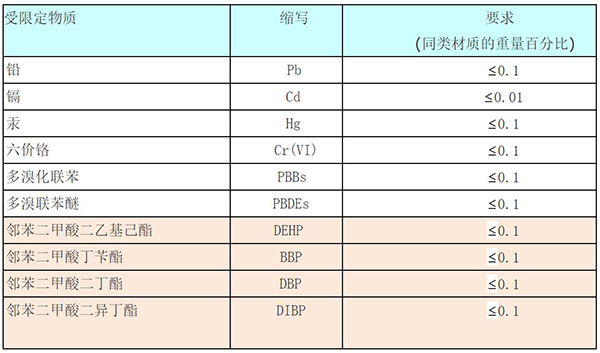
The maximum permitted concentrations in non- exempt products are 0.1% or 1000 ppm (except for cadmium, which is limited to 0.01% or 100 ppm) by weight. Hexavalent chromium is used in chrome plating, chromate coatings and primers, and in chromic acid. PBB and PBDE are flame retardants used in several plastics. Maximum Permitted Concentration: 0.1% ĭEHP, BBP, DBP and DIBP were added as part of DIRECTIVE (EU) 2015/863 which was published on 31 March 2015. RoHS is often referred to as the "lead-free directive," but it restricts the use of the following ten substances:

The Restriction of Hazardous Substances Directive 2002/95/EC ( RoHS 1), short for Directive on the restriction of the use of certain hazardous substances in electrical and electronic equipment, was adopted in February 2003 by the European Union.
#Rohs official website free#
Nexsun devices are free of Halogens (Fluorine, Chlorine, Bromine and Iodine), Antimony and Phosphorous.This article needs additional citations for verification. In the event a substance of very high concern (SVHC) becomes present in one of our products Suntsu will notify customers as required.

The new EU chemicals regulation know as REACH came into effect June 1st, 2007. The change to lead-free design has no negative effect in the electrical parameters, solderability, reliability or product performance.
#Rohs official website full#
All Suntsu surface mount lead-free products comply with RoHS requirements.Īll Nexsun products are manufactured lead-free and RoHS compliant as of the full implementation dates of production changes.


Suntsu’s response to the growing demand for environmentally friendly components began January 2004 with the introduction of optional lead-free surface mount tantalum capacitors. Measures on the collection, treatment, recycling and disposal of waste electrical and electronic equipment (WEEE) are set out in Directive (2002/96/EC) of January 2003 to reduce the waste management problems linked to the heavy metals and flame retardants referenced above. On July 1, 2011, A Jnew RoHS directive, 2011/65/EC (“RoHS 2”) was announced in the Official Journal of the EU. The EU Directive was updated December 2006 to EU 2006/122/EC adding PFoS as a banned substance. In February of 2003 the European Union released The Restriction of Hazardous Substances in Electrical and Electronic Equipment (RoHS) Directive (2002/95/EC) restricting the use of Lead, Cadmium, Mercury, Hexavalent Chromium and PBB/PBDE flame retardant materials in electrical and electronic products sold in Europe beginning July 1, 2006. Test Certificates and materials content information are available upon request.


 0 kommentar(er)
0 kommentar(er)
